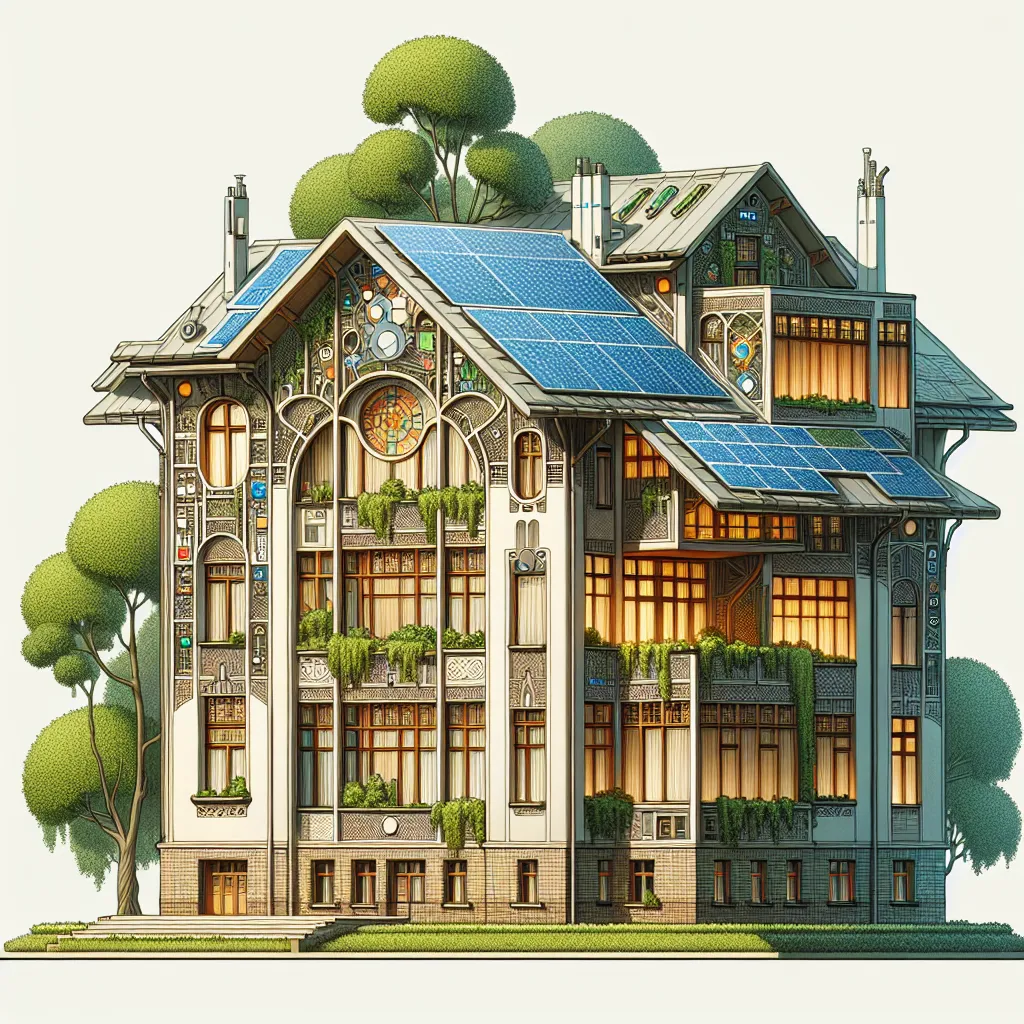How to Use Building Automation Systems for Energy Efficiency
 Quantum Cyber Solutions
Quantum Cyber Solutions
Published on
Wednesday, February 28, 2024
How to Use Building Automation Systems for Energy Efficiency
================================================================
Authors

Name
Con Tech News
Twitter
How to Use Building Automation Systems for Energy Efficiency
In today's rapidly evolving technological landscape, building automation systems (BAS) stand out as game-changers for energy efficiency. These sophisticated systems, which integrate and automate various building technologies, offer the promise of reduced energy consumption, lower costs, and a greener planet. Here's a deep dive into how you can leverage BAS to optimize energy use in buildings, both commercial and residential.
What is a Building Automation System?
A Building Automation System (BAS) is a network of interconnected hardware and software that centralize the control of various building systems. These include heating, ventilation, and air conditioning (HVAC), lighting, security, and more. By providing centralized control and monitoring, BAS ensures optimal performance, enhances comfort, and significantly boosts energy efficiency.
Key Components of BAS
- Sensors: These devices collect data from various points in the building, such as temperature, occupancy, and light levels.
- Controllers: These are the brains of the operation, receiving data from sensors and making decisions based on predefined algorithms.
- Actuators: These devices perform actions based on the controller's decisions, such as adjusting the temperature or dimming the lights.
- User Interface: Often in the form of a dashboard or app, this allows users to monitor and control the system.
How BAS Enhances Energy Efficiency
1. Optimized HVAC Systems
Heating, ventilation, and air conditioning systems are notorious energy guzzlers. However, with BAS, you can:
- Schedule Operations: Automate HVAC systems to run only when needed.
- Demand-Controlled Ventilation: Adjust ventilation based on occupancy levels, ensuring no energy is wasted in empty rooms.
- Predictive Maintenance: Use data analytics to predict and perform maintenance before costly breakdowns occur.
2. Smart Lighting Control
Lighting accounts for a significant portion of a building's energy use. BAS can help by:
- Automating Light Levels: Automatically adjust lighting based on natural light availability and occupancy.
- Zoning: Create lighting zones that can be independently controlled, ensuring energy is used only where needed.
- Energy Monitoring: Track energy consumption in real-time, enabling quick adjustments for maximum efficiency.
3. Integration with Renewable Energy Sources
BAS can seamlessly integrate with renewable energy systems such as solar panels and wind turbines. By monitoring and controlling the energy flow from these sources, buildings can:
- Load Shifting: Use energy storage devices to store excess energy during off-peak times and use it during peak demand.
- Grid Interaction: Sell excess energy back to the grid, creating an additional revenue stream.
4. Advanced Analytics and Machine Learning
The integration of AI and machine learning with BAS opens new horizons. These technologies allow for:
- Energy Usage Predictions: Anticipate future energy needs based on historical data and patterns.
- Adaptive Learning: Continuously optimize system performance by learning from past behaviors and adjusting algorithms accordingly.
- Fault Detection and Diagnostics: Quickly identify and diagnose system anomalies, ensuring minimal energy wastage.
Real-World Applications
Commercial Buildings: Skyscrapers and large office complexes significantly benefit from BAS. For instance, The Edge in Amsterdam, often dubbed the world's smartest building, uses BAS to create a highly efficient, sustainable environment. Sensors and algorithms work in harmony to minimize energy use, leading to a reported 70% reduction in energy consumption compared to traditional buildings.
Residential Buildings: Smart homes are becoming more common with BAS technology. Integrating systems like Nest thermostats, smart lighting, and energy monitors can lead to substantial savings. Imagine a home that knows your schedule, adjusts lighting and HVAC settings accordingly, and even detects when it's time to perform maintenance on your systems.
The Future of BAS
The future of Building Automation Systems lies in further integration and increased intelligence. As IoT devices become more prevalent, the granularity and precision of control will improve. Energy-efficient buildings will evolve into self-sustaining ecosystems, communicating with smart grids and other buildings to optimize energy use on a macro scale.
Conclusion
Building Automation Systems represent a monumental leap towards energy efficiency and sustainability. By optimizing HVAC, lighting, and integrating renewable energy, BAS not only reduces costs but also plays a critical role in combating climate change. Whether in towering commercial structures or cozy residential homes, the adoption of BAS is a stride towards a smarter, greener future.
So, are you ready to embrace the revolution? Let's make our buildings smarter and our planet greener!
Feel free to share your thoughts or experiences with BAS in the comments below. Stay tuned for more exciting tech insights!
Discuss on Twitter • View on GitHub
Tags
Previous Article
Mastering Tool Tracking with Hilti ON!Track
Next Article
Harnessing Virtual Reality for Immersive Construction Planning
Subscribe to my newsletter
Read articles from Quantum Cyber Solutions directly inside your inbox. Subscribe to the newsletter, and don't miss out.
Written by
